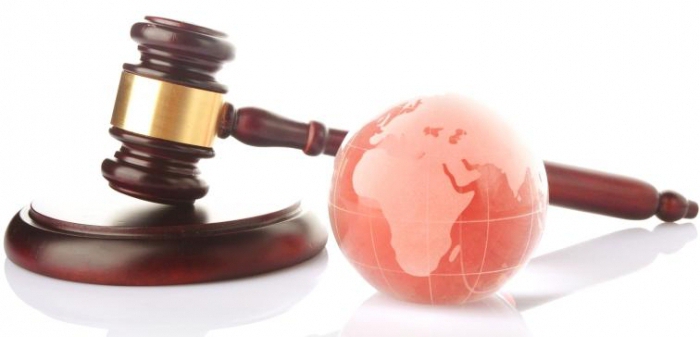One of the main functions of the state at the present stage is the protection of nature. The right to a safe environment and favorable living conditions is constitutionally enshrined. In this regard, a special mechanism for regulating environmental relations is required. This issue is dealt with by a separate industry. Consider the question of what is the place of environmental law in the legal system, its concept, subject and object, structure and sources. Man, of course, is part of nature, and he simply cannot exist separately, isolated from it, without the use of resources.

Environmental Law: subject
The theory of law considers the subject of their regulation to be the basis for highlighting a certain set of legal norms in a separate industry. It is a system-forming factor. The subject of regulation of legal norms is defined as a specifically defined sphere (area) of social relations that differ from others. When determining them, it is necessary to take into account the object of the sphere under consideration, in this case it is nature, or, in other words, the environment and its individual elements. The subject and system of environmental law are directly related. Taking into account all the above, the following definition can be made.
In environmental law, the subject is certain social relations that have arisen over the environment or nature. Namely, for a specific object - water resources, mineral resources, etc. In other words, these are the interests of people, their needs, which are met at the expense of the environment. Do not confuse with the attitude of society or an individual to nature itself. This is a subject in the traditional sense, in addition, other relations are included in it. These include ownership of resources and natural objects and protection of rights as well as legitimate interests.
 Thus, the environmental law system at the moment under the subject means a complex of relations:
Thus, the environmental law system at the moment under the subject means a complex of relations:
- on nature management;
- on the acquisition and termination of property rights to certain resources or natural objects;
- environmental protection from destruction;
- to protect the legitimate interests and environmental rights of not only individual citizens, but also legal entities.
The theory of law defines the object of this sphere as certain natural values that are significant for society, and for which relations are regulated by law. Modern legislation distinguishes them in such: environment, natural complexes, individual resources and natural objects. Let's consider each in more detail.
Natural environment, or nature

From the point of view of the natural sciences, nature is understood as the totality of certain objects and systems in the material world in their initial state, which is not the result of people's labor activity. In the legal sense, the concept justifiably includes what is created by man, for example, forest plantations, grown on special farms and released into water bodies of fish or animals. Nature in its natural state is the whole Universe, including both the cosmos and the Earth. However, as an object of relations falling within the scope of environmental law regulation, it is defined by the boundaries of the use in human practice and its anthropogenic impact on it. From the modern legislation in its pure form, the term "nature" has almost been supplanted and replaced by "environment".The environmental law system borrowed this concept from foreign colleagues, where it has a broader and more complete content. Along with elements of the natural world, objects from the social environment, for example, historical and cultural monuments, are included in it.
Natural complexes
Each of them should be understood as a natural ecological system (ecosystem) and other sets of resources and natural elements. They are an independent object of relations regulated by the considered branch of law. Natural complexes include areas under special protection (national parks, reserves, resorts, etc.), special zones and protected areas (sanitary protection, water protection, etc.), the continental shelf, the inland sea, etc.
Separate nature resources and objects

We can say that the concept and system of environmental law are based in part on these elements. Separate natural resources and objects include: soil, earth, subsoil, water, atmospheric air, flora and fauna, forests, near-Earth outer space. It is also worth noting the independent objects of regulation in law and legislation. These include the ozone layer, species of animals and plants that have the status of rare or endangered species, and climate as a weather regime for a specific area.
Correlation of concepts
If we talk about the definition, then a natural object implies the whole set of homogeneous (one type) substances of nature - this is mineral resources, earth, water, forest, etc. Moreover, it can be both on a global and national scale.
More narrow is the concept of natural resource. It is part of the object used by man to satisfy his needs. For example, the animal world should be considered as a single whole, but the individual commercial animals or birds, fish as its separate part. This is a natural object and resource, respectively.
Environmental relations: regulatory methods

They should be understood as a set of methods, techniques and forms of legal impact on the mode of action of all participants in environmental relations. In science distinguish imperative method incentives, dispositive, etc. The system of the environmental law industry uses them not only individually, but also in combination with each other.
- Administrative law. In this case, the participant in the relationship, on the one hand, is an authorized state body. The essence of the method is the establishment of prescriptions, prohibitions, permissions and the provision of measures of state coercion to appropriate behavior and compliance with legal instructions.
- Civil law. It is characterized by the equality of the parties, the participants act as independent from each other, equal subjects.
- Stimulation method. Its essence lies in the adoption by the legislator of such provisions that are aimed at interest and inducement of subjects to proactively, voluntarily take and implement measures for the effective implementation of legislation in the field of environmental law.
What are the sources of environmental law?
These are normative legal acts that regulate relations and the interaction of nature and society (in other words, environmental). To have this status, they must meet a number of requirements:
- Objectively expressed form - a presidential decree, a law, a government decree, an order (or instruction) of a ministry, a decision of local self-government bodies;
- acceptance only by the authorized appropriate body;
- form defined by law;
- official publication in accordance with the Constitution of the Russian Federation.
The question of studying the sources of environmental law creates some difficulty, since a fairly large number of them are published. In this regard, systematization is carried out on various grounds.So, depending on legal force distinguish laws and by-laws. According to the subject of regulation, sources can be general (the Constitution, etc.) and special (for example, the Federal Law "On the Animal World"). Depending on the nature of legal regulation, they are divided into procedural and material.
The system of environmental law sources
It is a pyramid, on top of which is the Constitution of the Russian Federation, which has a higher power. It contains two distinct groups of norms: general and specific (environmental). The second stage is occupied by federal and international treaties and the rule of law. In fact, they do not stand above or below the Constitution, but still they are priority over the norms of domestic legislation, and this wording is contained in many federal laws.
Next in importance are federal laws. The main one regulates environmental issues, the rest are narrower in scope.
Further up the steps are the legal acts issued by the President of the Russian Federation, the Government of the Russian Federation, federal ministries and individual departments. A whole category below are the laws and constitutions of the country's subjects, regulatory acts of local authorities. Local legal acts and court decisions complete the system.
Environmental law system
It consists of individual structural elements, the main parts - sub-sectors, institutions and norms. Environmental law is considered from three positions: as a branch of law, academic and scientific discipline. Therefore, it is important to study the structure in terms of the approach to each element separately. When characterizing environmental law as an integrated industry, it is necessary to take into account the presence in its structure of recognized and formed sub-sectors (land, mountain, water, forestry, etc.). Their development separately and as a whole implements a differentiated approach to the legal regulation of environmental management relations in society, environmental protection relative to individual natural objects. All parts of the environmental law system (sub-sectors) have their own structure.

Structure of law as a scientific or academic discipline is somewhat different and may include three parts. First, general. It usually justifies the existence of environmental law as an industry with its provisions. Secondly, the special part. It defines separate legal measures ensuring the rational use and protection of waters, forests, lands, etc., the legal regime of territories with special status, issues of regulation of the treatment of other chemicals, waste, etc. Thirdly, the special part. It contains information on international environmental law and such in individual foreign states.
